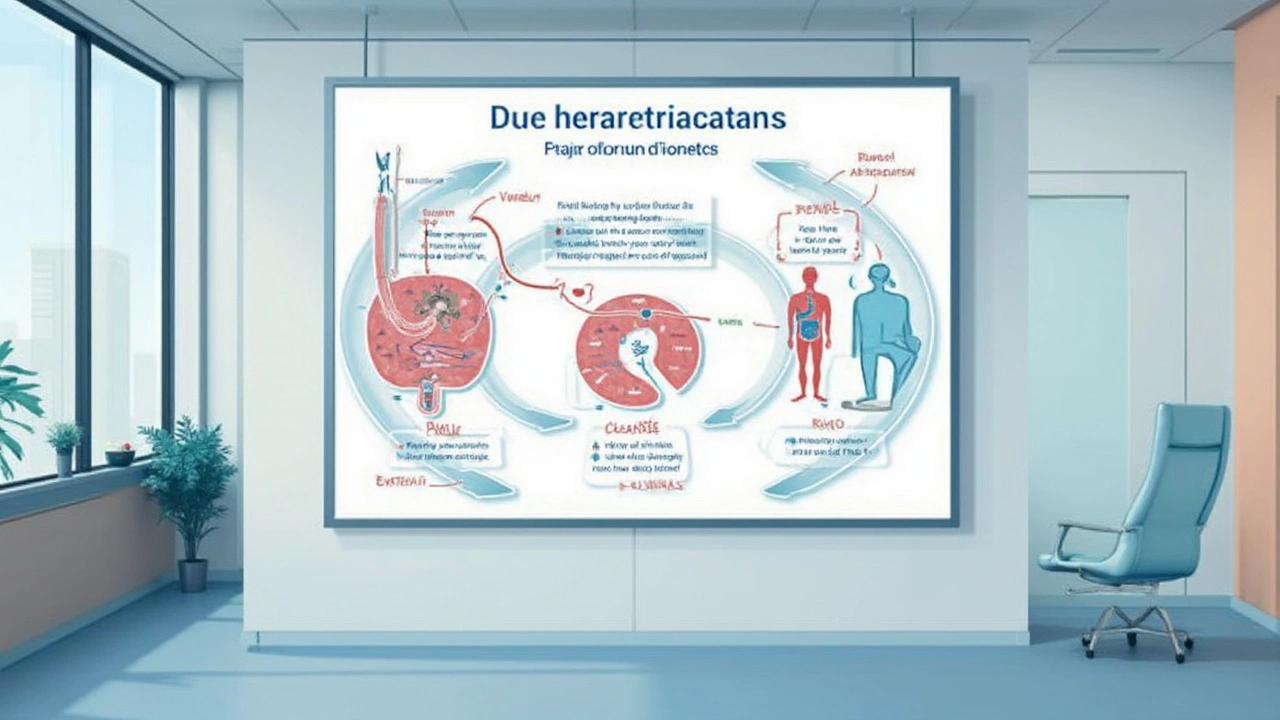This article takes a practical, in-depth look at the pharmacokinetics of levetiracetam, focusing on its absorption, metabolism, and renal clearance. It highlights real-world facts and tips clinicians should know to avoid dosing errors or complications. The discussion breaks down how levetiracetam behaves in different patients—from healthy adults to those with kidney disease. Expect useful monitoring tips and interesting findings about this staple anti-seizure medication.
Pharmacokinetics: How Drugs Move in Your Body
Pharmacokinetics answers a simple question: what happens to a drug after you take it? Knowing this helps you understand why one pill works quickly, another needs time, and why some meds interact badly with food or other drugs. Below are the practical facts that matter when you take medicine.
Key stages: ADME
ADME stands for Absorption, Distribution, Metabolism, and Excretion. Absorption is how the drug gets into your bloodstream — swallowing a tablet is slower than an injection. Distribution is where the drug goes: some stick mainly to blood, others cross into tissues or the brain. Metabolism mostly happens in the liver and turns drugs into forms the body can handle. Excretion removes the drug through urine, bile, or stool, and the kidneys play a big role here.
Want a quick example? Take an oral antibiotic: it must survive stomach acid (absorption), reach the infected tissue (distribution), avoid being broken down too fast by liver enzymes (metabolism), and then be cleared so levels drop (excretion). If any stage changes — say your liver is slow — the drug can build up and cause side effects.
What affects how a drug behaves
Several practical factors change pharmacokinetics. Age matters: infants and older adults process drugs differently. Body weight and fat affect distribution. Liver and kidney problems slow clearance. Food can help or block absorption — some meds must be taken with meals, others on an empty stomach. Smoking, alcohol, and other drugs change liver enzymes and can speed up or slow down metabolism.
Half-life is a useful number: it tells you how long it takes for blood levels of a drug to drop by half. Drugs with short half-lives need more frequent dosing. Those with long half-lives stay in your body and can reach steady state after several doses — that’s when the amount going in equals the amount leaving.
Drug interactions often come down to pharmacokinetics. One drug can block the enzyme that breaks down another, causing higher levels and more side effects. Or a supplement might speed clearance and make a medication less effective. That’s why always tell your clinician and pharmacist about every prescription, OTC drug, and supplement you use.
Practical tips for patients
- Follow timing instructions: take meds with or without food as directed.
- Keep dosing consistent: same time each day helps maintain steady levels.
- Ask about kidney or liver checks if you have chronic disease or take long-term meds.
- Avoid alcohol and smoking when advised — they change drug levels.
- Before starting a new medicine or supplement, check for interactions.
If you want deeper reads, DoctorSolve.com has guides on specific drugs, dosing, and safety. Pharmacokinetics may seem technical, but the takeaway is simple: small changes in how a drug moves through your body change how it works. That knowledge helps you take medicines safer and smarter.

